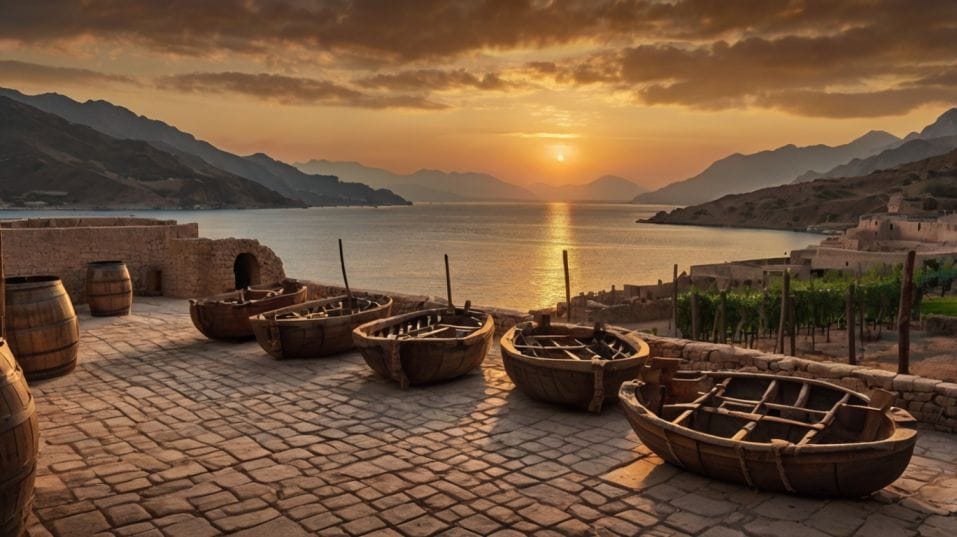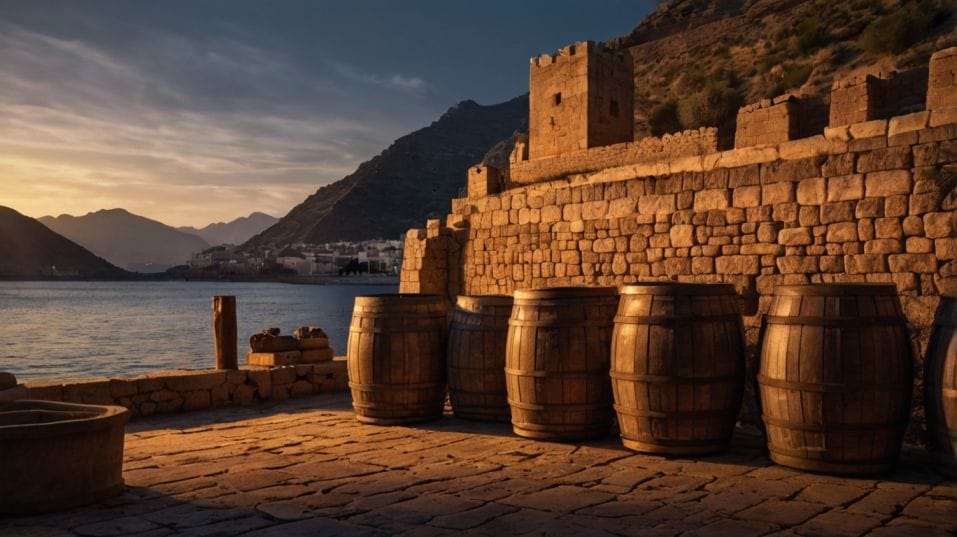How Wine Shaped Trade Routes and Empires
Discover how wine shaped trade, empire, and identity. Learn how each bottle carries history—perfect for curious drinkers exploring wine deeper.

What if every sip of wine told the story of an empire? For the wine-curious just beginning their journey, here's a truth that changes everything: wine isn’t just about flavor.
It’s about movement—how people, power, and ambition carried it across continents and centuries.
Understanding wine’s global journey reveals why certain grapes thrive where they do today—and how the bottle in your hand became a piece of living history.
Why Wine Traveled First
Long before wine was swirled in crystal or decanted by sommeliers, it was basic necessity—safer than water, easier to store than milk or beer, and more transportable than almost any other staple.
Wine kept its value across long distances and seasons. It was a product that improved with age (to a point), adapted to local conditions, and carried both practical use and symbolic power.
That adaptability made wine one of the first truly global products. As early civilizations developed trade systems, wine moved with them—south through the Levant, west across the Mediterranean, and north into Europe.
Phoenician ships stocked it. Greek colonists planted it. Egyptian rulers taxed it. Wine was the original “liquid asset,” and wherever it went, it made more than money—it made culture.
When you hold a bottle today, especially one from an ancient growing region like Sicily, Lebanon, or Georgia, you're not just tasting local fruit.
You're tasting the result of ancient routes, centuries of experimentation, and decisions made by empires to turn a crop into capital.

The Phoenicians: Vines by Sea
The Phoenicians, expert seafarers of the ancient Mediterranean, didn’t just trade wine—they spread it. Their ships were stocked with amphorae of wine as they established trade posts from Tyre to Carthage to southern Spain.
In doing so, they planted vines across thousands of miles of coastline, introducing grape growing to regions that would later define European winemaking.
They didn’t carry Cabernet or Chardonnay. The grapes they spread were wild, localized, and practical—chosen not for prestige, but resilience.
Still, the core idea was there: find a vine that thrives, make it travel, and turn it into a good you can sell, barter, or honor the gods with.
That same approach applies to tasting today. You’re not just asking what the grape is—you’re asking why it ended up there.
Why did that coastal vineyard choose this varietal? Why is this region known for minerality or spice? Trace the path of how a grape arrived, and you’ll start to understand why it expresses the flavors it does.
The Roman Empire: Standardizing the Vine
Romans were builders, organizers, and drinkers of staggering volume. But more importantly, they were the first to systematize wine across an entire empire.
They wrote manuals on vineyard management. They classified wine by style and status. They even created distribution hubs—early versions of what you'd now call "wine regions."
Roman legions planted vines along their campaign routes. Vineyards appeared wherever soldiers settled, from the Mosel Valley to the Rhône.
And Roman roads made sure wine could move as fast as armies. This laid the foundation for regional identity in wine: Burgundy became Burgundy not by accident, but because the Romans saw its potential.
This is why some of the most classic regions in Europe still make wine that reflects Roman ideals: structure, age-worthiness, and regional consistency.
Think of a bold, structured red from the Douro or a tightly balanced Chianti. These wines are living extensions of Roman taste and geography.
So when you taste a wine that feels disciplined, layered, and long on the finish, you’re tasting a Roman legacy—an engineered flavor meant to hold up through time and distance.
Monks, Merchants, and Medieval Power
After the fall of Rome, wine production didn’t disappear—it became sacred. In medieval Europe, monasteries kept viticulture alive.
Monks charted terroir centuries before the term was coined. They experimented with slope, soil, and climate to understand which grapes worked where and why.
Burgundy, Champagne, and the Mosel owe much of their identity to monastic patience. The focus was no longer just on volume or trade, but expression—of land, of devotion, of refinement.
The Commercial Side of Wine in the Middle Ages
Meanwhile, secular power followed the money. Wine was heavily taxed, regulated, and politicized. Royal courts competed for prestige bottles.
City-states like Venice and Genoa dominated the wine trade through strategic control of ports and tariffs. Access to certain wines became a sign of class and control.
You can use this perspective today. When a wine comes from a cloistered hillside or a heavily regulated appellation, ask yourself: is this heritage or hype?
Some wines earn their status through centuries of refinement. Others lean on old reputations. Knowing the difference helps you choose smarter.
Global Expansion: Fortification and Empire
By the 15th century, wine wasn’t just traveling—it was adapting. Long sea voyages required wine that wouldn’t spoil. The solution? Fortification.
By adding distilled spirits, winemakers created stable, age-worthy styles like Port, Madeira, and Sherry. These weren’t creative expressions—they were survival strategies.
Madeira, for example, developed its distinctive oxidative profile because barrels baked in the hulls of ships crossing the equator. Fortified wines didn’t become icons overnight. They earned it through hard use and high demand.
Wine Colonies and Cultural Evolution
Colonial powers like Spain, Portugal, and Britain relied on wine for morale, medicine, and trade. Vineyards sprang up in newly claimed lands—South Africa, Argentina, California—not for art, but supply.
These vines weren’t chosen for complexity, but hardiness and yield. Still, over generations, they began to reflect their environments. Local soil. Local air. Local struggle.
And that’s where you find some of the most compelling wines today—places that began with survival but evolved into expression.
Tasting a robust South African Chenin Blanc or a high-altitude Malbec connects you to that transformation—from imperial tool to cultural voice.
Wine as Identity and Resistance
In the 20th century, wine took on new roles. It became a tool of national pride, economic recovery, and even political resistance.
After world wars tore through Europe, wine regions rebuilt their identities bottle by bottle. In places like France and Italy, wine was tied to local heritage—something worth protecting and refining.
In Eastern Europe and parts of the Middle East, wine continued underground, often in defiance of political or religious restrictions.
In former colonies, winemakers reclaimed land, technique, and story—shaping a new narrative around terroir that belonged to them, not former empires.
Today, every glass of wine carries this tension between past and future. It’s both tradition and reinvention. As a wine drinker, you’re part of that continuum.
Whether you’re tasting a classic Bordeaux or an experimental orange wine from Georgia, you’re participating in an ongoing conversation between soil, culture, and intention.
Final Thoughts
Wine shaped trade routes, empires, and economies—not because it was a luxury, but because it was essential. It traveled, adapted, and persisted. It still does.
If you’re serious about learning wine, don’t just memorize tasting notes. Follow the trade winds. Track the vines.
Ask how this grape got to this place, and why it still grows there. Taste the tension between survival and style. Understand how climate, conflict, and culture shape the bottle in your hand.
Tonight, open something old-world, something fortified, or something from a place built by trade—not tourism. Let it challenge you. Let it teach you. Then take that curiosity into your next choice. Wine isn't a trend. It's a map. Start exploring.




